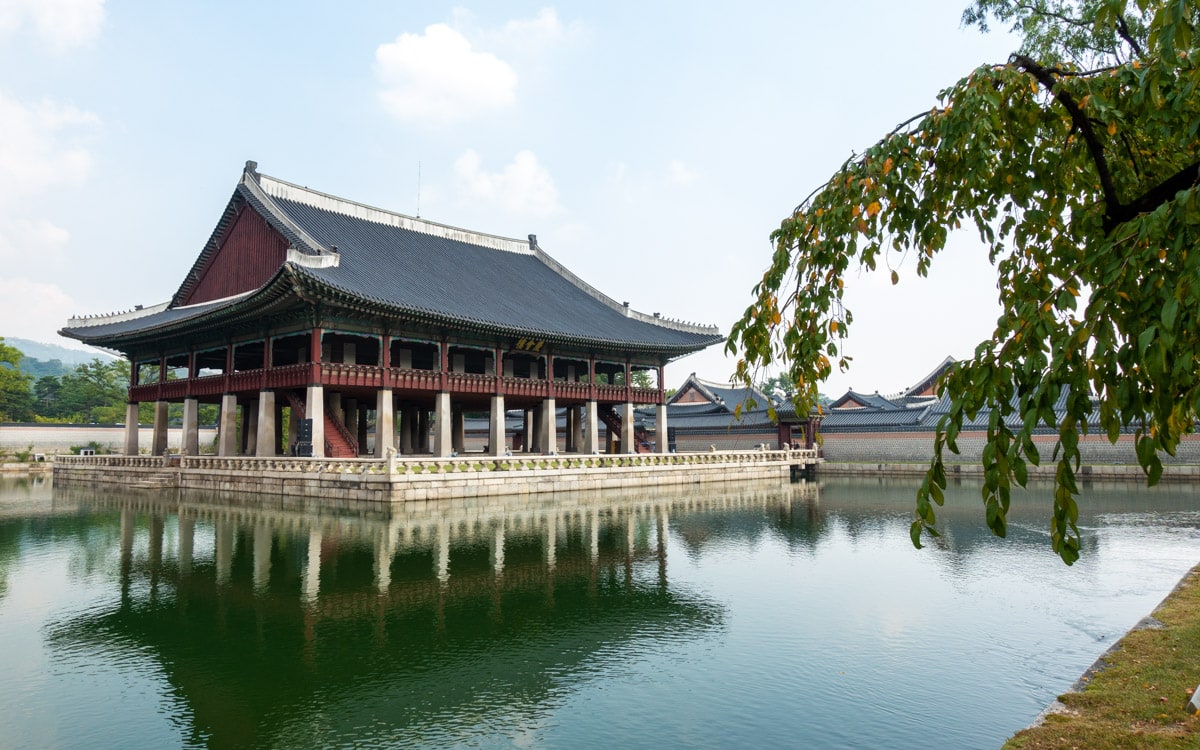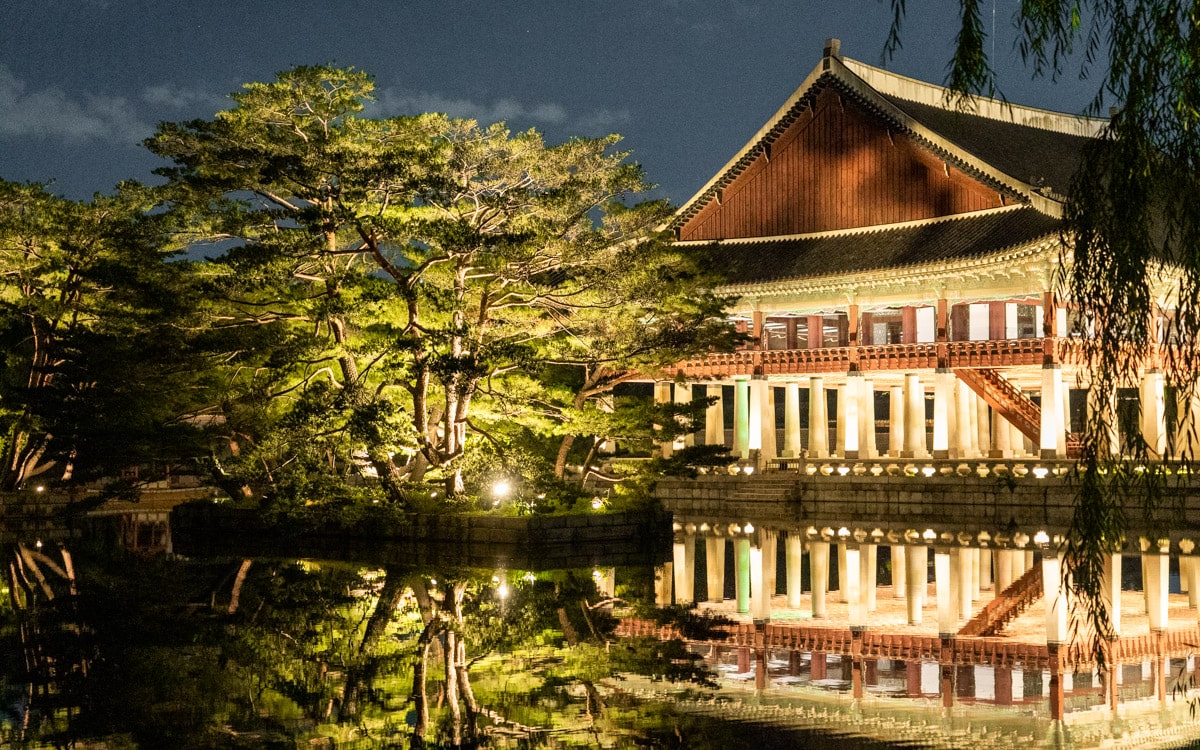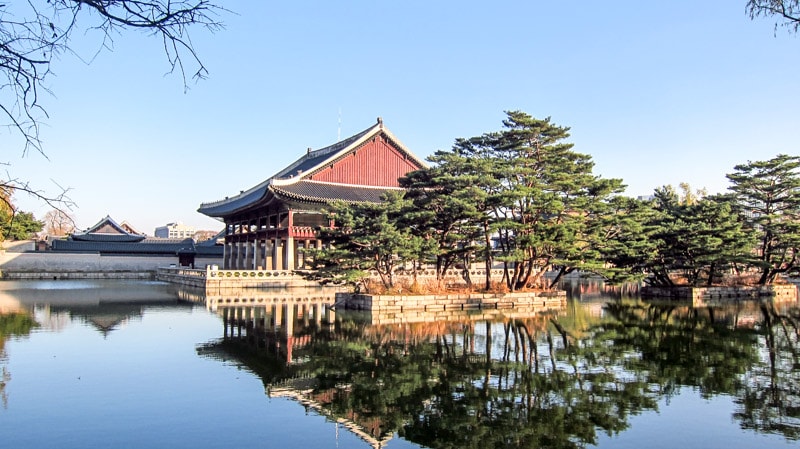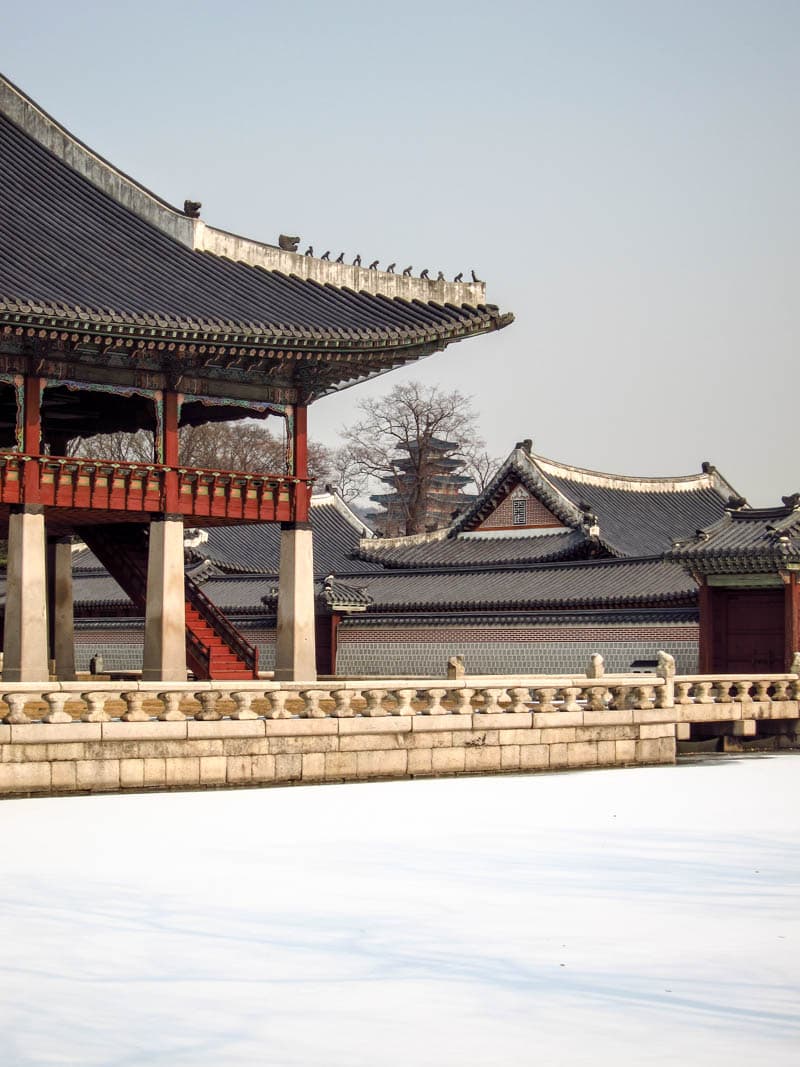
Located on a peaceful pond, Gyeonghoeru Pavilion treats visitors with some of the most beautiful views at Gyeongbokgung Palace. The pavilion was once used for entertainment when important foreign visitors visited the palace.
The name Gyeonghoeru is a reference to the king and how he can succeed and be a great leader when he is surrounded by the right people.
A two story pavilion was built here in 1412 during the reign of King Taejong. About 60 years later, during the reign of King Seongjong (1469-1494), the pavilion began to tilt. It was decided that the pavilion would have to be be rebuilt.
Gyeonghoeru Pavilion burned down by the Japanese in 1592 during the Imjin War. The current structure dates back to 1867.
The current pavilion as seen today was built in 1867 during the reign of King Gojong. The pavilion is one of the only structures at the palace that survived the Japanese occupation of Korea from 1910 to the end of World War 2 in 1945.
A stone wall once surrounded the pond but was removed during the occupation. Part of this wall was restored between 2004 and 2005.

Gyeonghoeru is one of the largest elevated pavilions in Korea by floor area. The location offered great views of Mount Inwangsan and the surrounding palace grounds.
The wooden structure was built with two floors. The first floor consists of 48 stone columns which symbolize yearly astronomical events.
The second floor consists of bays set at different levels. The highest ranked officials sat closest to the center. The center bays symbolize heaven, earth, and man. Around them are 12 bays which symbolize each month of the year. Around them are 24 more bays which symbolize the 24 seasonal subdivisions.

On the railings of the bridge leading to the pavilion feature stone animals. These sculptures were created to keep evil spirits away.
The man made pond that surrounds the pavilion was used by royalty for boating in the summer months. Gyeonghoeru was originally surrounded by a gate which allowed access to only the highest officials and the king.
The architectural design of Gyeonghoeru symbolizes heaven, earth, man, and time.
Gyeonghoeru Pavilion is located to the west of Gangnyeongjeon Hall, the residence of the king.
The pavilion has been designated National Treasure Number 224.

Last Updated on Dec 2, 2021